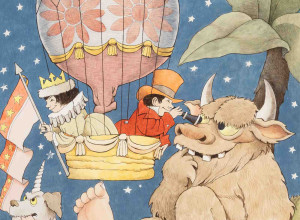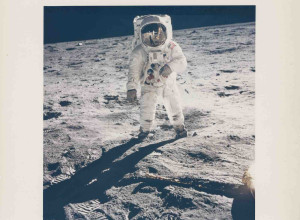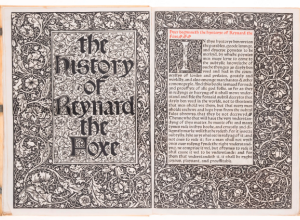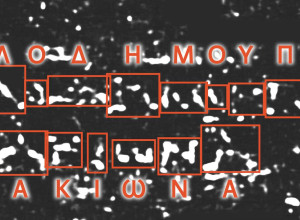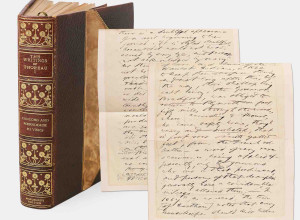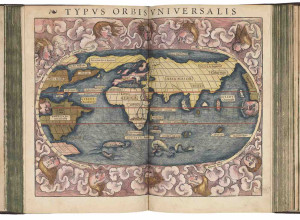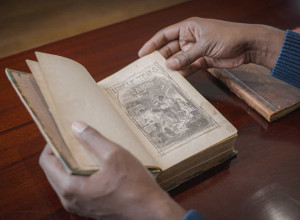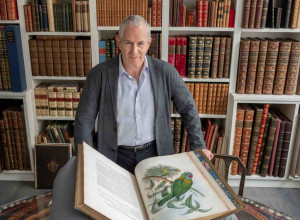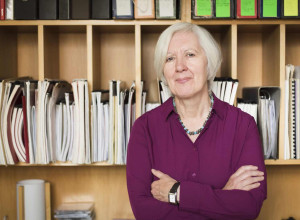October 29, 2015 |
Giambattista Bodoni: His Life and His World, in Print

Giambattista Bodoni in 1792. By Giuseppe Turchi. Reproduced with permission from David Godine.
Typography, the art and science of arranging type to make words legible, was long the province of a select group of printers and designers. (Now anyone with a word processor can adjust fonts to his heart's content.) Italian printer and type designer Giambattista Bodoni (1740-1813) created fonts that continue to influence how we read today. He is now the subject of a book entitled Giambattista Bodoni: His Life and His World, by Valerie Lester (David R. Godine, $40, October 2015). Bodoni ushered in the era of modern typefaces with his use of clean lines, creating an elegant, geometrical look. Notable contemporary examples of Bodoni font include the masthead of Vanity Fair magazine, the brand logo for Hilton hotels, and even grunge-rock band Nirvana.
Lester spent almost eight years traveling to the charming Italian city of Parma, where Bodoni spent most of his career. This is the first substantial English-language biography of the typographer. "Other biographies indulge in hero-worshipping. They don't take on the whole man," she said during a conversation earlier this fall. But since Bodoni was a total perfectionist, and spent most of his time at work, "he's difficult to write about because his life actually isn't deeply interesting. He worked so hard, and left little time for other things!" (Bodoni didn't wed until the ripe old age of 51.) As a result, Lester's book is also a biography of eighteenth-century Parma. It was a hub of activity, welcoming visitors like Napoleon and the Mozarts père et fils. Even today Parma is a delicious little city. "You can walk around it, there is so much art and so much music. You can go to a concert every night of the week. On Sundays during the winter, the city hosts a midday concert and afterwards Prosecco is served alongside tiny little pieces of pizza. It's so civilized!"
Hugely ambitious, Bodoni devoted his spare time to completing what many collectors today consider his magnum opus, the Manuale tipografico, a specimen book filled with magnificent examples of type. Bodoni labored for forty years on this side project, which was ultimately published by his wife Margherita five years after his death. Two volumes are filled with Roman characters, capital letters, alphabets in Greek, Hebrew and Arabic (among others), exotic characters, and pages of symbols, ornaments, and ciphers. The Manuale is regarded as one of the greatest achievements of typography, a dazzling compendium of typefaces and designs.
It was a story of book theft that sparked Lester's interest in Bodoni. Book conservator Mimi Meyer ransacked the Harry Ransom Research Center at the University of Texas at Austin during the early 1990s, stealing over 300 rare books, including the library's copy of Bodoni's Manuale. (Among the purloined items were a collection of Petrarch's poetry published by Aldus Manutius in 1514, works by Lewis Carroll, and a quarto edition of Audubon's Birds of America.) The FBI suspected Meyers of selling these and other books to auction houses -- including Heritage Auctions and Swann Galleries of New York -- raking in over $400,000 in ill-gotten gains. Many of the stolen books, including the Manuale, were recovered, and in 2004 Meyer was sentenced to three-years probation and ordered to pay $381,595 in restitution. "I wanted to talk to Meyer about the thefts, but she died in January 2010," Lester said. "Bodoni's home and workplace were burglarized too, but he was less concerned about the loss of silver and personal items than about his type. He lived to cut type and to print. It was his great joy."
Giambattista Bodoni: His Life and His World, by Valerie Lester; David R. Godine, $40, 280 pages.
Typography, the art and science of arranging type to make words legible, was long the province of a select group of printers and designers. (Now anyone with a word processor can adjust fonts to his heart's content.) Italian printer and type designer Giambattista Bodoni (1740-1813) created fonts that continue to influence how we read today. He is now the subject of a book entitled Giambattista Bodoni: His Life and His World, by Valerie Lester (David R. Godine, $40, October 2015). Bodoni ushered in the era of modern typefaces with his use of clean lines, creating an elegant, geometrical look. Notable contemporary examples of Bodoni font include the masthead of Vanity Fair magazine, the brand logo for Hilton hotels, and even grunge-rock band Nirvana.
Lester spent almost eight years traveling to the charming Italian city of Parma, where Bodoni spent most of his career. This is the first substantial English-language biography of the typographer. "Other biographies indulge in hero-worshipping. They don't take on the whole man," she said during a conversation earlier this fall. But since Bodoni was a total perfectionist, and spent most of his time at work, "he's difficult to write about because his life actually isn't deeply interesting. He worked so hard, and left little time for other things!" (Bodoni didn't wed until the ripe old age of 51.) As a result, Lester's book is also a biography of eighteenth-century Parma. It was a hub of activity, welcoming visitors like Napoleon and the Mozarts père et fils. Even today Parma is a delicious little city. "You can walk around it, there is so much art and so much music. You can go to a concert every night of the week. On Sundays during the winter, the city hosts a midday concert and afterwards Prosecco is served alongside tiny little pieces of pizza. It's so civilized!"
Hugely ambitious, Bodoni devoted his spare time to completing what many collectors today consider his magnum opus, the Manuale tipografico, a specimen book filled with magnificent examples of type. Bodoni labored for forty years on this side project, which was ultimately published by his wife Margherita five years after his death. Two volumes are filled with Roman characters, capital letters, alphabets in Greek, Hebrew and Arabic (among others), exotic characters, and pages of symbols, ornaments, and ciphers. The Manuale is regarded as one of the greatest achievements of typography, a dazzling compendium of typefaces and designs.
It was a story of book theft that sparked Lester's interest in Bodoni. Book conservator Mimi Meyer ransacked the Harry Ransom Research Center at the University of Texas at Austin during the early 1990s, stealing over 300 rare books, including the library's copy of Bodoni's Manuale. (Among the purloined items were a collection of Petrarch's poetry published by Aldus Manutius in 1514, works by Lewis Carroll, and a quarto edition of Audubon's Birds of America.) The FBI suspected Meyers of selling these and other books to auction houses -- including Heritage Auctions and Swann Galleries of New York -- raking in over $400,000 in ill-gotten gains. Many of the stolen books, including the Manuale, were recovered, and in 2004 Meyer was sentenced to three-years probation and ordered to pay $381,595 in restitution. "I wanted to talk to Meyer about the thefts, but she died in January 2010," Lester said. "Bodoni's home and workplace were burglarized too, but he was less concerned about the loss of silver and personal items than about his type. He lived to cut type and to print. It was his great joy."
Giambattista Bodoni: His Life and His World, by Valerie Lester; David R. Godine, $40, 280 pages.






